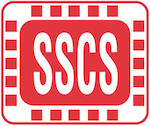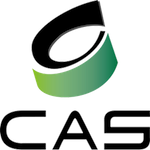Every article published in Design & Test is reviewed in advance of publication to evaluate its contribution and ensure technical veracity. Authors may request that their names and affiliations be withheld from the reviewers. Design & Test publishes diverse types of editorial content; feature articles—which include Cover Features, Best Practices, Perspectives, and Research Features—provide a strong mix of case studies, opinion pieces, and solutions to technical problems. Design & Test periodically publishes Special Issues on leading-edge topics that have been proposed by guest editors. Authors can submit manuscripts for publication as Best Practices, Perspectives, or Research Features on any topic within Design & Test's scope at any time. Only those articles deemed to be the most significant, innovative, and of high current interest are chosen for publication.
Reviewer Conduct
To guarantee fairness to the author, the reviewer for a manuscript submitted to Design & Test should abide by a number of guidelines including, but not limited to, the following:
- Respond within the allotted time.
- Provide sound, constructive reviews.
- Assume that papers submitted for publication are not meant to be public.
- Not use material from a refereed paper.
- Not share material from a refereed paper.
- Not distribute copies of a refereed paper unless the material is already public.
- Inform the associate editor in charge, special issue guest editor, or editor in chief if there are any conflicts of interest involved in refereeing a paper.
The IEEE does outline review guidelines for IEEE referees in the IEEE Policy "6.4.1.B Publication Principles—Reviewers of Manuscripts." Items specific to the conduct of the referee are highlighted here. However, do note that Design & Test is not the same as an IEEE Transactions journal; there are significant differences:
Scope
Design & Test covers all aspects of the design and test of electronic and solid state circuits and systems engineering, technology, and applications. Articles must be relevant to practice, stressing meaningful applications of principles to important problems. Case studies should include enough detail so that readers can relate them to their own situation. Research Features should be written at a level of abstraction that will be understandable to Design & Test's broad readership. Best Practices articles should clearly state the applicability of the concepts. Perspectives should provide a stimulating commentary on a topic of general interest to computing professionals.
Writing Style
Authors should strive for active verbs and straightforward declarative sentences, making every effort to help readers understand the concepts presented. An article should be comprehensible to all Design & Test readers, regardless of their specialty or research focus. At least 15 percent of article length should be tutorial, describing the principles or techniques of existing approaches and their advantages and disadvantages. A brief literature survey does not satisfy this requirement. Articles should have sufficient introductory material—a minimum of one paragraph, and no more than five paragraphs. They should also include a brief conclusion—ideally, one or two paragraphs—that doesn't merely repeat the introduction or summarize the article but reflects on lessons learned or points to the future.
Manuscript Length
Design & Test is typically looking for succinct, practical, readable articles that will appeal to experts and non-experts alike. Feature articles shouldn't exceed 5,000 words (with each average-size figure counting as 200 words), including text, bibliography, and author biographies, and should contain no more than 12 references (30 for surveys) to other published works.
Confidentiality
Although the reviewers may know the name of the writer, writers do not learn the names of the reviewers. Reviewers are instructed not to disclose their identity; authors can also request that their identity not be disclosed. Inappropriate remarks are deleted before material is sent to authors.
Electronic Records
Reviews must be submitted electronically through ScholarOne Manuscripts. Reviewers are instructed not to keep a copy of the manuscripts reviewed. Until they are accepted for publication, manuscripts are the property of the author.
What to Do and What Not to Do
It takes a good deal of time and effort to develop a manuscript that is technically relevant and readable to the standards of Design & Test. Detailed reviews are invaluable for improving overall technical quality, utility, and readability.
Reviewers are encouraged to:
- Keep reviews objective.
- Pay attention to organization and technical content by commenting on the technical significance and accuracy of the work.
- Identify and note the type of manuscript (research, tutorial, survey, or case study).
- Comment on the appropriateness of methods, analyses, results, and conclusions.
- Suggest specific improvements; identify specific areas that can be removed.
- Correct errors and misconceptions.
- Recognize that Design & Test has a word limit of 5,000 words, including 200 words for each figure and table.
- Look at the references for appropriateness; Design & Test generally accepts 12 references as a maximum.
- Provide tips that will help the author to: Reject manuscripts that require extensive revision or reside outside the scope of Design & Test.Reject manuscripts with trivial or insignificant results or minor contributions to the subject area even if they are well written.
- state appropriate, accurate, and relevant conjectures and results;
- employ better definitions, diagrams, tables, graphs, and examples;
- present clear applications of the principles contained in the paper;
- make the article technically consistent and complete; and
- organize the material to help the reader understand the issues presented.
Reviewers are discouraged from:
- Reviewing manuscripts found personally objectionable.
- Reviewing manuscripts that are not of personal interest.
- Spending excessive time correcting grammar, spelling, and voice. Staff editors will collaborate with the authors of accepted papers on magazine style and organization.
- Identifying themselves or their own work.
- Including personal comments and biases about the author and subject matter.
- Rejecting manuscripts that require a simple reorganization.
- Rejecting long papers that try to do too much. Instead, reviewers should point out which parts are most important and describe how to revise the manuscript to give it focus.
Review Process
You may use the public comments section of the review form to address comments to the author about the submission.
It is expected that reviewers submit their reviews by the timelines requested by the magazine (normally three weeks). The complete review process normally varies from four to six months, and so a timely response from reviewers is key to ensuring timely releases of magazine issues. The peer review process allows publications such as Design & Test to continually present the highest quality articles to its readers and to maintain a reputation for quality and integrity. Volunteer contributions such as manuscript reviewing is much appreciated.
Revisions
Reviewers who recommend major revisions to an article are instructed to point these out specifically and differentiate optional changes from mandatory ones. If extensive revisions are required, the EIC of Design & Test will occasionally reject the manuscript and recommend the preparation of a new, heavily revised version for resubmission. Manuscripts may also be rejected on the basis of low readership interest.
Special Issue Reviewers
Reviews of submissions for special issues are handled entirely by the guest editors, who then supply Design & Test with the completed reviews.
In the Case Where a Preliminary/Conference Version is Supplied
If the author provided a previously published conference paper, please check the submission to determine whether a sufficient amount of new material has been added to warrant publication in Design & Test. New results are not an absolute requirement; however, the submission should contain expansions of key ideas, examples, elaborations, and so forth, of the conference paper.




